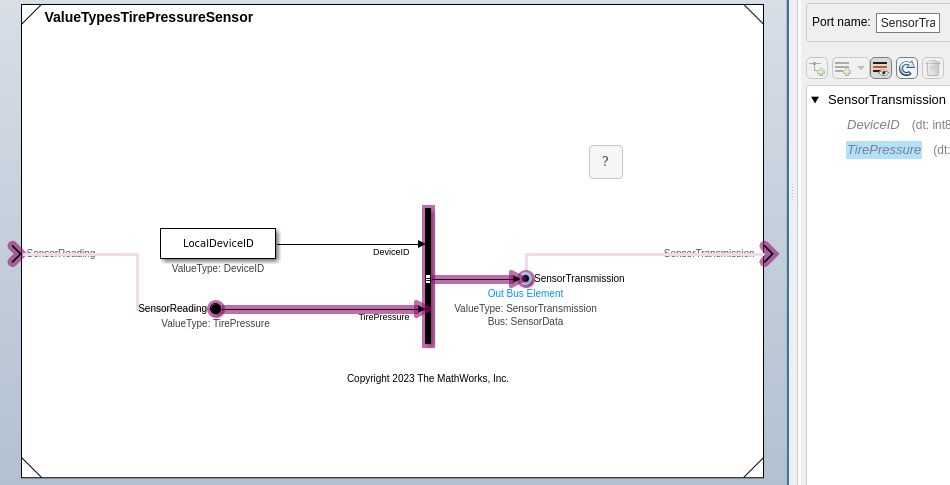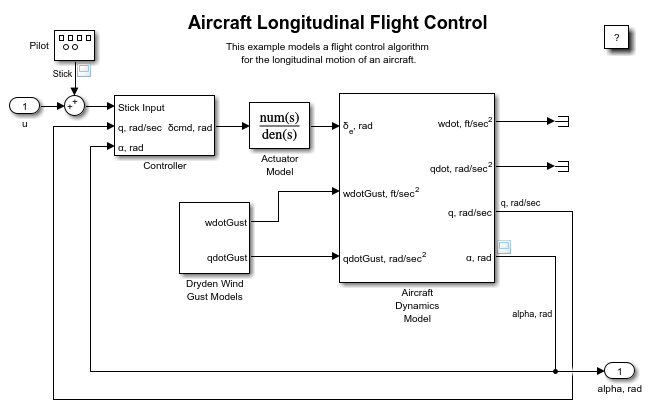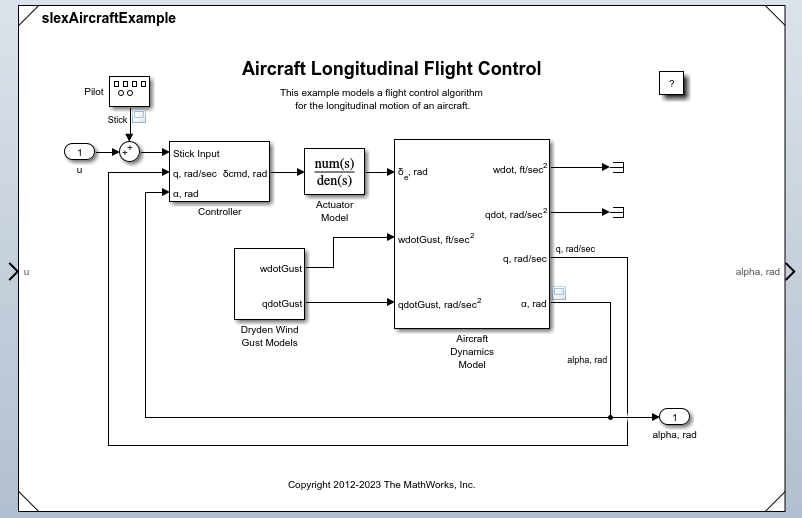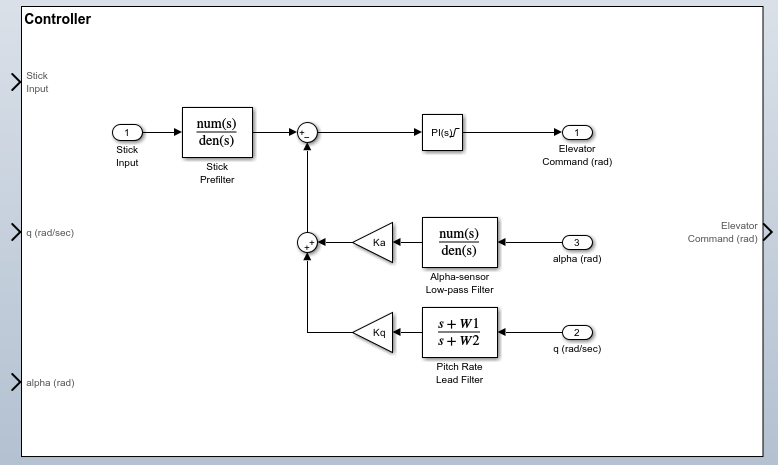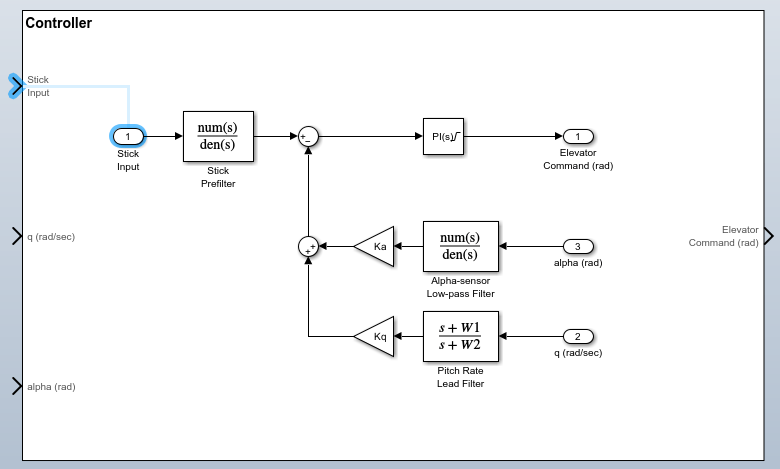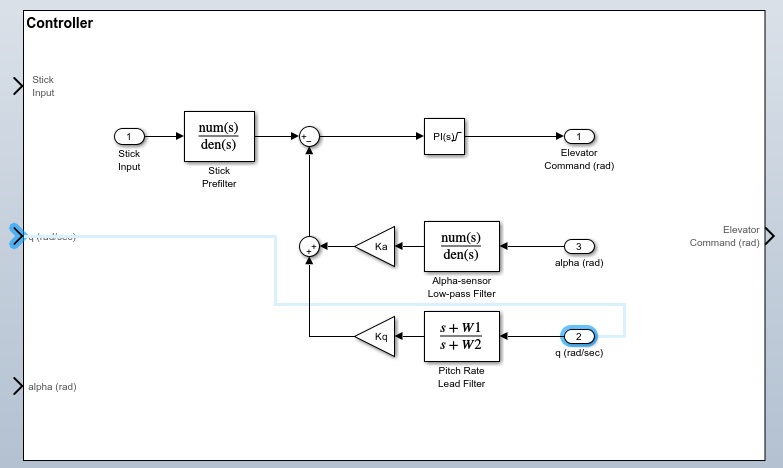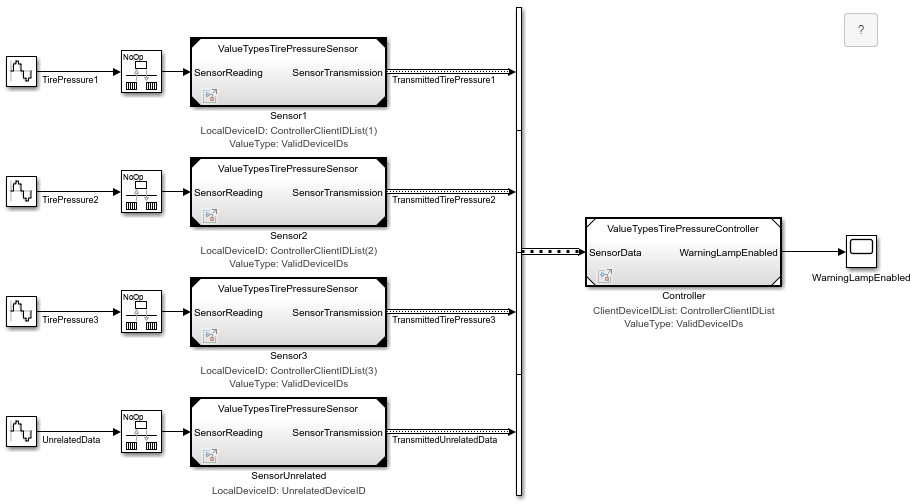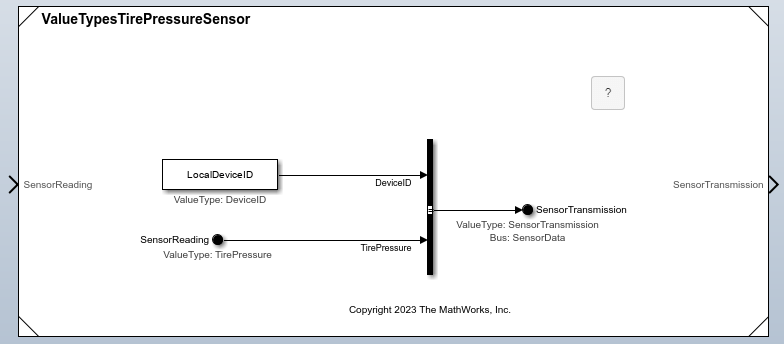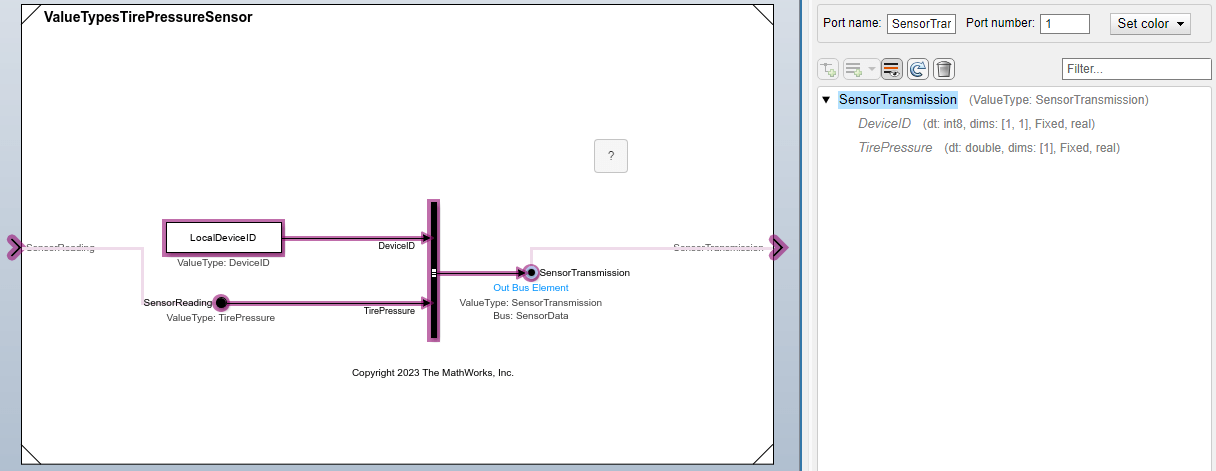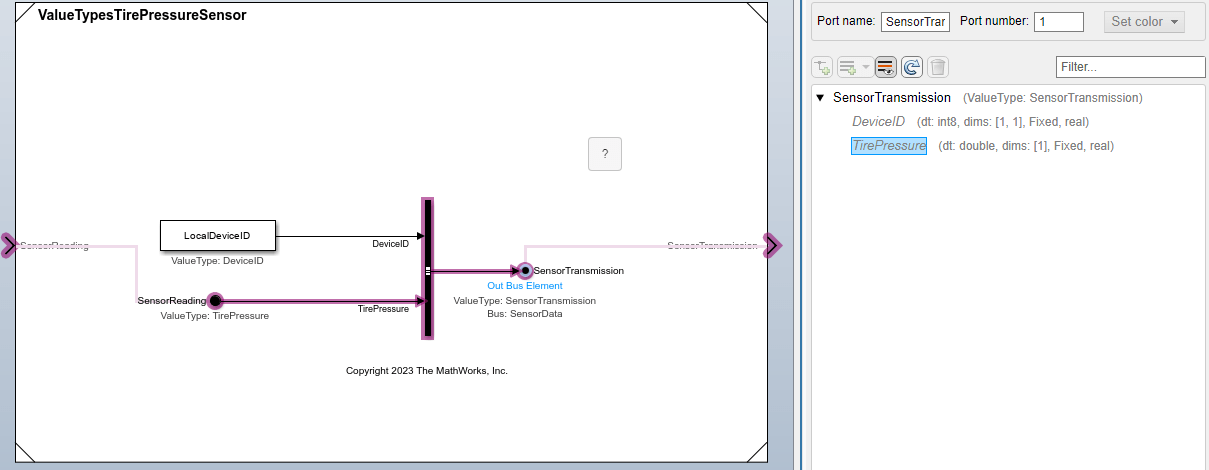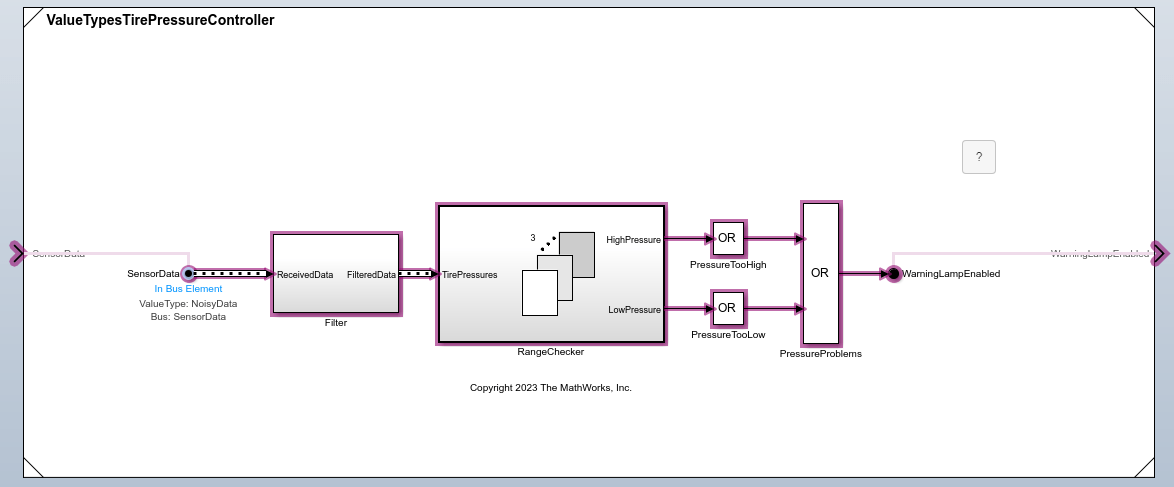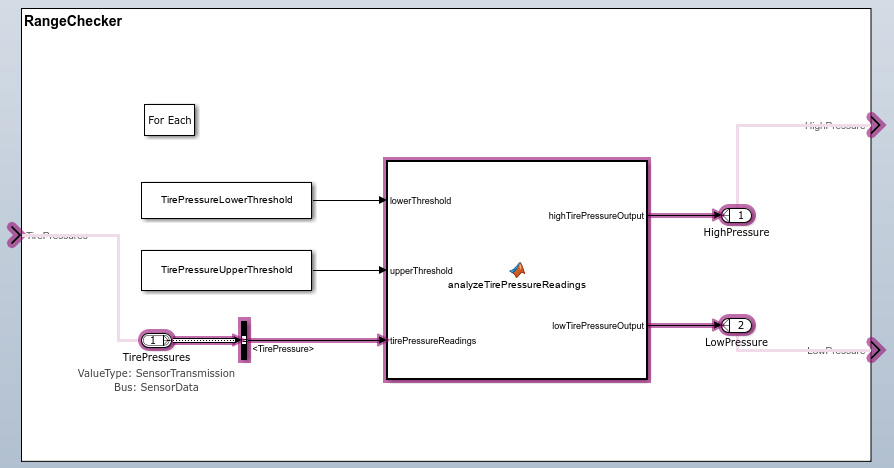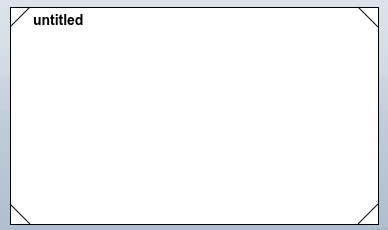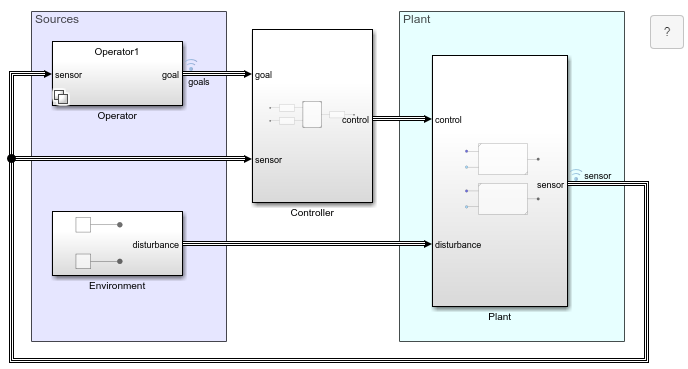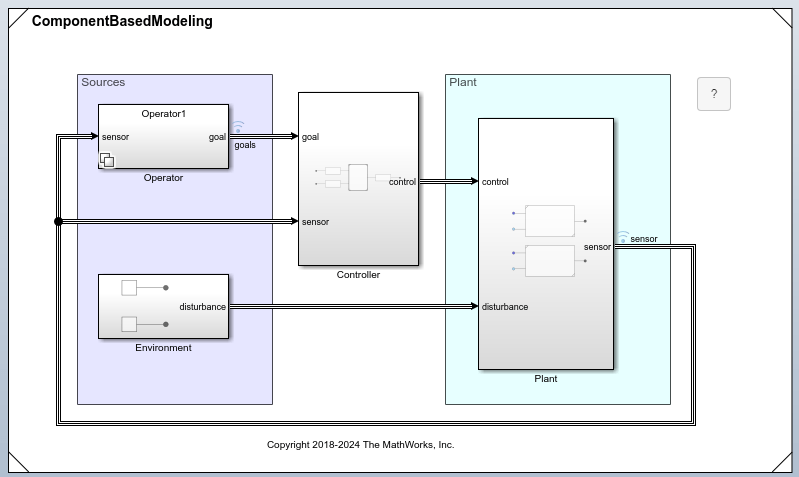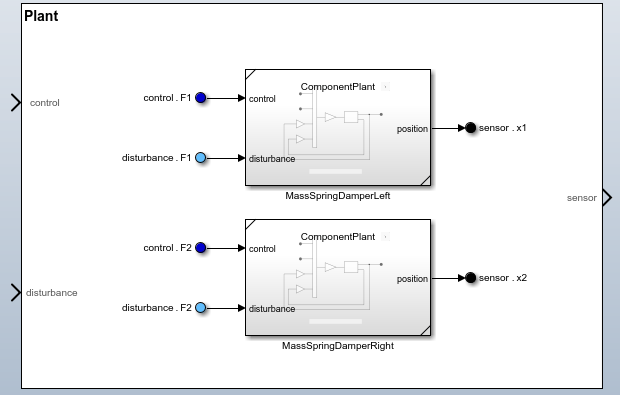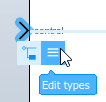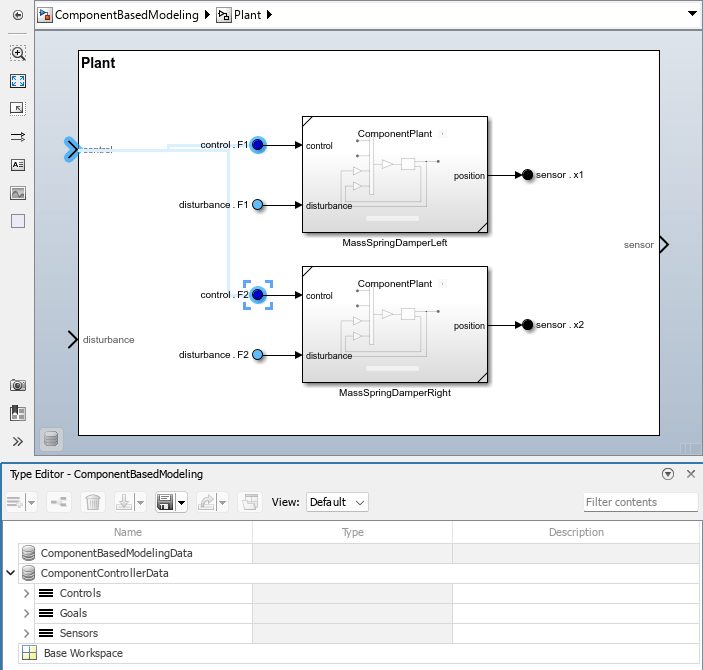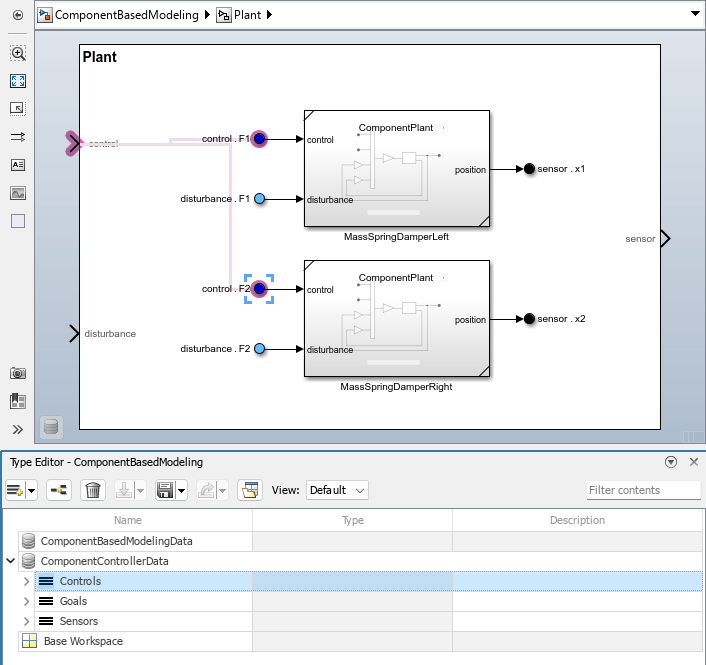Component Interface View
Display component interfaces to trace port connections and author ports
Renamed from Interface Display in R2024b
Description
The Component Interface View displays the input ports, output ports, and boundary of the current subsystem or model.
When you build large model hierarchies, the Component Interface View can help you:
Identify input and output ports.
Trace input ports to their destinations.
Trace output ports to their sources.
Author input and output ports.
Edit types assigned to ports.
The Component Interface View also supports the same interactions as the Simulink® Editor. For example, you can edit block diagrams and display information overlays such as sample time.
Open the Component Interface View
Simulink Toolstrip: On the Modeling tab, in the Design gallery, click Interface View.
Simulink Editor: Press Ctrl+Shift+V.
MATLAB® Command Window: Open a model or subsystem. Then, enter
interfaceView.
